This text was originally published in Polish. This is our own translation of it. We are not native speakers, so if any reader finds any errors or linguistic inaccuracies, we will be grateful for reporting them.
Die 19 septembris anno Domini 2023 Sancti Januarii Episcopi et Sociorum Martyrum
It is a truism that over time certain practices or concepts become incomprehensible or practically forgotten. At most, their use may evoke certain associations, otherwise appropriate, but without a genuine understanding of them. This is the case with the term „Papal Chapel” (Italian: Cappella Papale, French: Chapelle Papale), which – although used in the official Vatican nomenclature [1] – practically does not exist in the contemporary mentality of the faithful of the Catholic Church. Even if it appears, it is transparent, without content, and is most often identified simply with the Vatican.
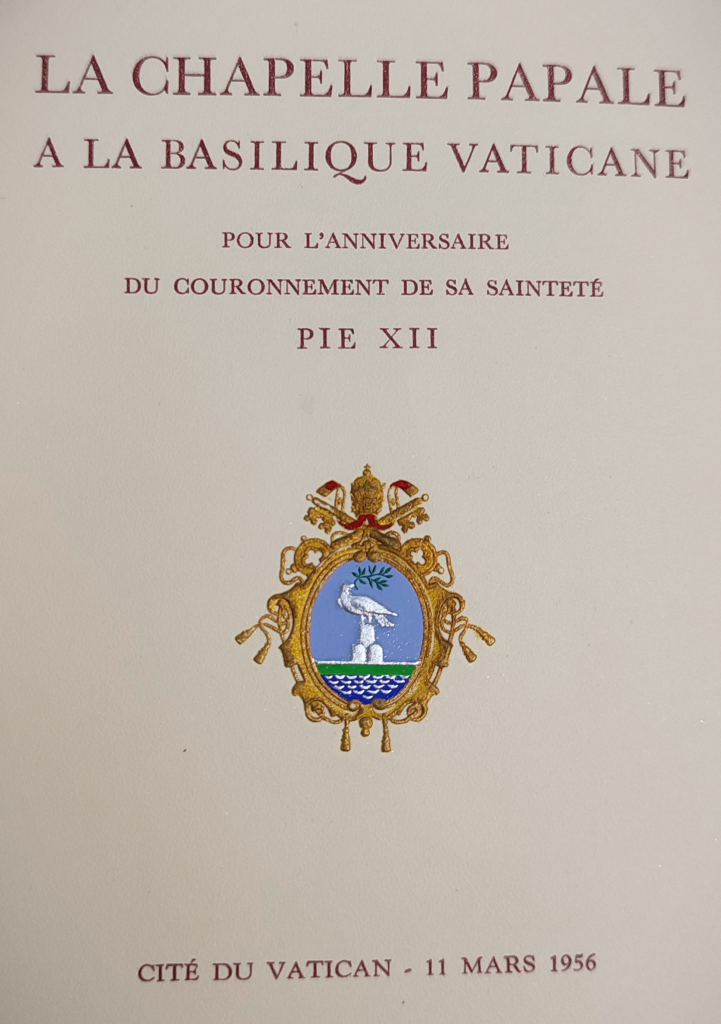

We therefore provide a proper definition of this term, briefly and in a necessary way outlining its relevant contexts [2]. It should also be noted at the outset that the current synonym for the main meaning of the „Papal Chapel” is the term „Papal Liturgy”, although it has a much less technical and precise character.
I. Historical context
The origin of the term „Papal Chapel” is historically rooted in the history of the papacy and is directly related to the Avignon captivity in the 14th century, where seven successive Popes resided. It was sufficient time to settle in and thus create an appropriate space for daily practices of Divine Worship. Without going into historical details [3], the reference is, of course, to the process of transferring the so-called station liturgy and ceremonies performed by the Pope as Bishop of Rome into the narrow confines of the Avignon Palace and the chapel there [4].
After returning to Rome, the practices used were preserved and even developed, resulting in, among other things, the creation of the Sistine Chapel in the 15th century (indirectly) and (directly) in the editing of a comprehensive papal ceremonial that incorporated, unified and constituted these practices [5]. On the basis of the Renaissance papal ceremonial after the Council of Trent, the Caeremoniale Episcoporum was prepared, the first edition of which saw the light of day in 1600 [6]. These events defined the nature of the Roman liturgy, especially that celebrated by the Pope, cardinals and bishops, until the Second Vatican Council [7].

II. Meanings of the term „Papal Chapel”
The term „Papal Chapel” has three meanings. Briefly, it means: a) the place where the liturgy is celebrated; b) those who celebrate the liturgy; c) the liturgy itself. They are all interconnected, to such an extent that the absence of one of them will exclude the others [8].
Ad a. We talk about Papal Chapels as places of worship in the proper sense when we mean facilities belonging to the Pope in which papal liturgies are celebrated on a daily basis. These will be chapels in the Apostolic Palace, especially the Sistine Chapel (Cappella Sistina) and the Pauline Chapel (Cappella Paolina), where in the past „ordinary” (resulting from the temporal and sanctoral) and „extraordinary” (related to the papal prerogatives and specific events such as conclave) papal liturgies were celebrated during the year.
These will also be chapels founded or directly related to the papacy, but in which papal liturgies were not customarily celebrated, such as the Chapel of Sancta Sanctorum at the Basilica of St. John Lateran. Finally, these will be religious buildings indirectly related to the Bishop of Rome scattered around the world, to which the nomenclature is extrapolated. However, in the strict sense, we are talking about Papal Chapels as places of worship in relation to those shrines where papal services and ceremonies involving the collaborators of the Vicar of Christ on earth are held.
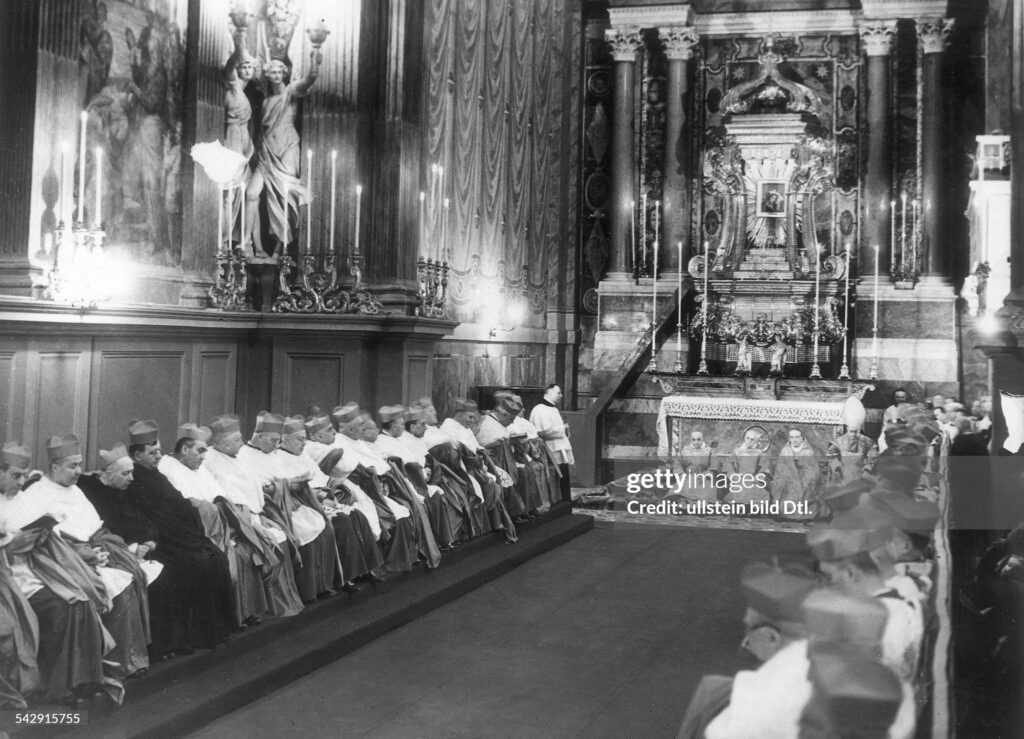
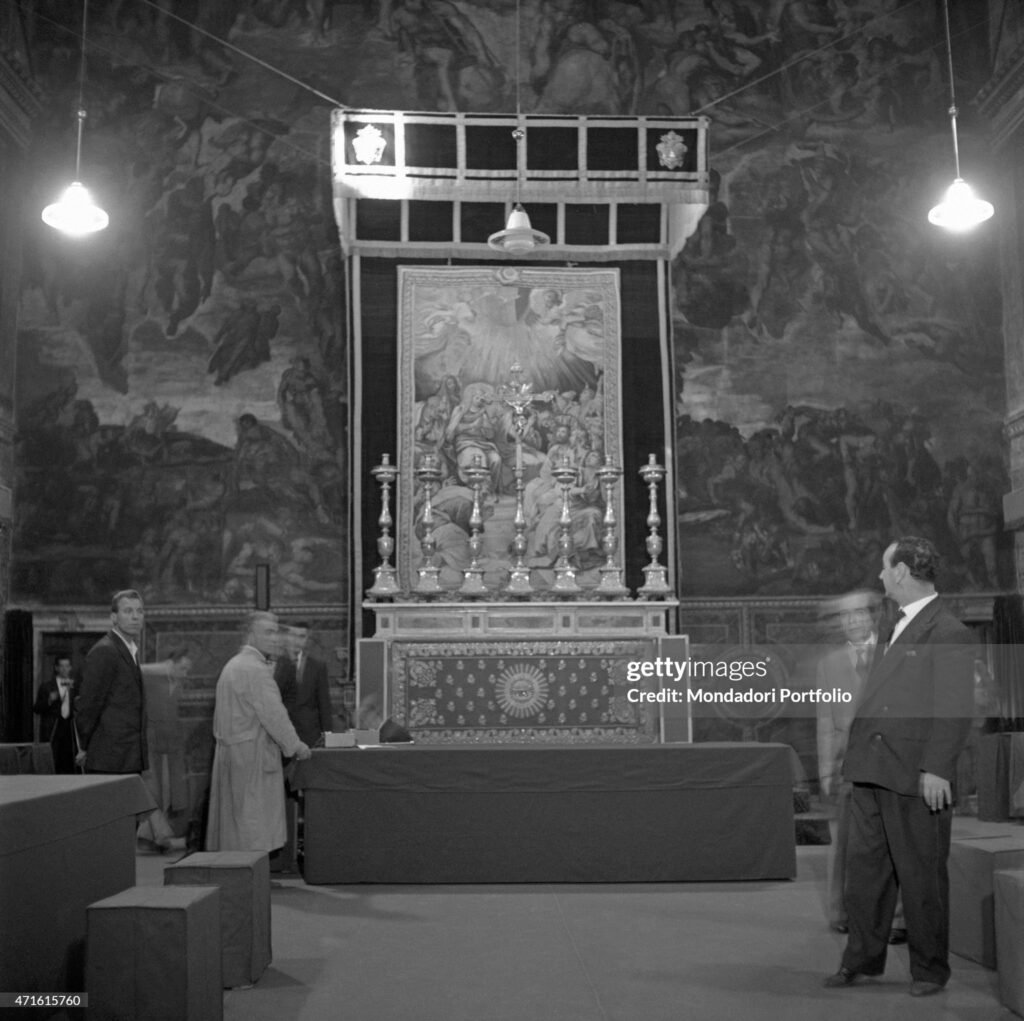

Ad b. Cappella Papale is also used to designate official members of the Papal Court (House) who participate in papal liturgies. This applies to both clergy and lay people (in the past it had a wider application, see footnote no. 7). In other words, it is a synonym for the Papal Court (currently the House). It is worth noting that despite the reforms, the terms Cappella Papale (Pontificia) and Familia Pontificia are still used in the official nomenclature [9].
To put it simply, the Papal Chapel includes those collaborators of the Bishop of Rome who take part in his official religious and spiritual activities resulting from the office he holds, while the Papal Family consists of those collaborators of the Holy Father who are responsible for the temporal matters of his existence and activities. The difference between the Papal Chapel and the Papal Family was also visible during liturgies, when – to simplify things a bit – in solemn processions, members of the Papal Chapel preceded the Pope, and members of the Papal Family followed him.


So who belongs to the Papal Chapel and who to the Papal Family constituting the Papal Court (House) and what is the difference between them? To answer this question in general [10], it should be said that the Papal Chapel includes, first of all, cardinals, then other members of the Vatican City State and its dicasteries, according to their levels of hierarchy and dignity (bishops, prelates), as well as superiors of orders and congregations, and finally the plebani of Roman parishes. In the past, lay representatives of Roman society also belonged to the Papal Chapel, e.g. the Prince Assistant, senators and patricians, who were sometimes assigned appropriate functions and/or places during services.
The Papal Family has been and still is made up of both clergy and laity. The clergy include, among others: Vicar General, Substitute for General Affairs of the Secretariat of State, Apostolic Preacher, Apostolic Almoner, but also, for example, Apostolic Protonotaries or Masters of Papal Ceremonies. The laity includes, among others: generals of armed formations (today only the Swiss Guard), Apostolic Procurators, Councilors of the Vatican City State, i.e. representatives of diplomacy in general, but also lay people directly serving the Pope [11].

It can therefore be said that „Papal Chapel” is a quite strict term defining a specific church institution directly related to the successors of Saint Peter and their ministry [12]. It is worth noting that since the Papal Chapels involve the Papal Court (House), they will not include, for example, private Masses celebrated by the Pope or services involving a significant part of the Papal Court (House), but celebrated without the Pope and/or without his mandate (the exception will be Sede vacante).
Ad c. The definition of the Papal Chapel in its first and main meaning is quite strict, however it does not function universally in Polish literature. At this point, we can recall the entry Papal Chapel from the Encyklopedja Kościelna, where we read: „Papal Chapel, Capella Pontificia, Capella papale, this is the name of the solemn service celebrated by the Pope, or at least when he is solemnly present at the service, in the assistance of cardinals and prelates of his court” [13]. This definition is correct in its main features, but incomplete.
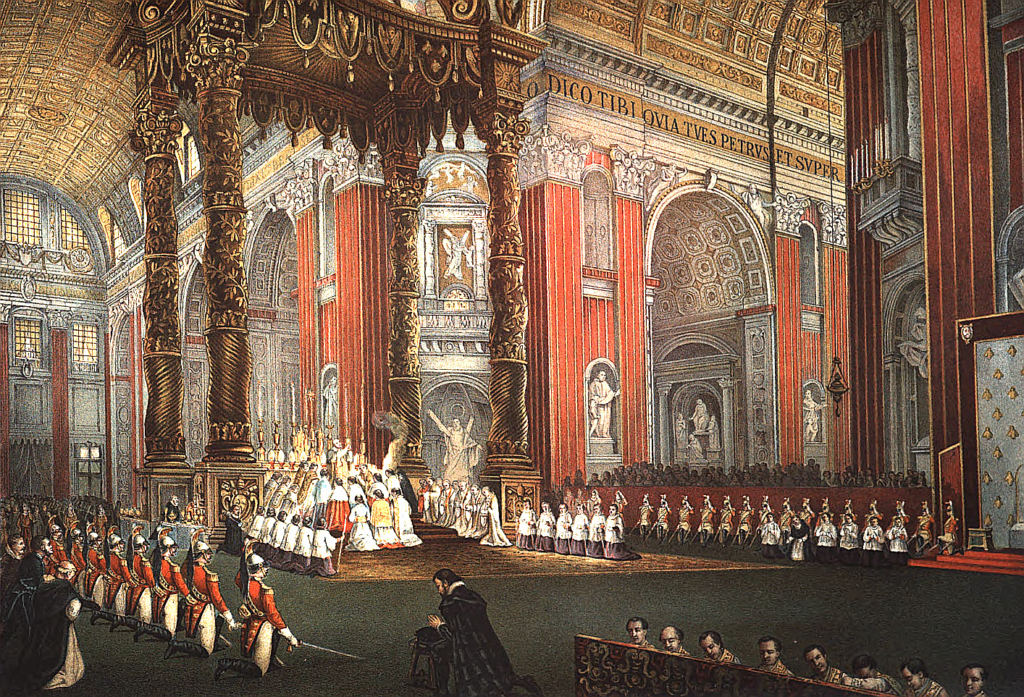
A kind of reference work on the topic of papal liturgy was – and basically still is – Gaetano Moroni’s monumental encyclopedia, consisting of as many as 103 volumes, the famous Dizionario di erudizione storico-ecclesiastica. An excerpt from two volumes of his work concerning the Papal Chapels (entry Cappelle pontificie, o papali, vol. VIII, from p. 114 and vol. IX to p. 122, both volumes published in 1841 in Venice) was published separately (also in 1841 year by the same publisher) entitled Le cappelle pontificie, cardinalizie e prelatizie. Opera storico-liturgica [14].
The definition of the Papal Chapel is identical in both works and reads: „Papal Chapel are the name given to Vespers, Lauds, Sung and Pontifical Masses and other sacred functions performed or assisted by the Holy Father, in accordance with the venerable rites of the Roman Church, with the splendor and ornaments [proper for] ecclesiastical magnificence, together with the Cardinals, Patriarchs, Archbishops, Bishops, Prelates, with most of the superiors of religious orders, with the principal personages of the Roman Magistrate, with the Roman Curia, the Pontifical Family and others who are honored there. There, i.e. in the sumptuous larger chapels of the Apostolic Palaces, where the Pope himself resides, or in other specific basilicas and churches of Rome, during feasts, on ordinary and solemn days, as well as in extraordinary circumstances. Functions supervised by the Masters of Ceremonies, the ministers assisting in these chapels, as well as the Pontifical Singers, under the supervision of the Prefect of the Sacred Apostolic Palaces” [15].
The definition given in this way is much more precise, but nevertheless still needs some supplementation. With help comes Mons. Léon Gromier (1879-1965), a canon of the Vatican Basilica and the first papal altarist, author of an excellent commentary on the Caeremoniale episcoporum [16]. Already in the introduction we read: „The Caeremoniale S.R.E. [Sanctae Romanae Ecclesiae, i.e., Holy Roman Church], from which the C.E. [Caeremoniale episcoporum, i.e., Ceremonial of Bishops] is partly derived, often speaks of the papal chapel for which it was created. One issue of Annuaire pontifical [Annuaire Pontifical Catholique], which delighted the clergy for forty-one years, defined it as follows: « The papal chapel includes all persons and all colleges who are given rank in the papal chapel and are therefore obliged to take part in the solemn processions of the Holy Father at [his] public functions, consistories, chapels, processions » [17]. Until someone does it better, I will try to give a more satisfactory definition. Thus, a papal chapel is a gathering of the sacred college, episcopate, prelature, papal family, officials and dignitaries, [both] ecclesiastical, religious, [and] lay, for solemn liturgical functions performed by the Pope or assisted by him, even if he is exceptionally absent, as well as during sede vacante. It also takes place at a public consistory, even though it is not a liturgical function; it also took place during the cavalcade on the day the new Pope took possession of the Basilica of St. John Lateran. So we see that the papal chapel means first of all the place, then what happens there, and finally those who take part” [18].

Gromier’s intuitions were based on documents issued by the Holy See, because in 1943 the Sacred Congregation of Ceremonies prepared a document given to all cardinals, which summarized the rules of the papal ceremonial concerning them. The content of this document, entitled Norme ceremoniali per gli Eminentissimi Signori Cardinali, is important for many reasons, but here we will stop at the definition of the Papal Chapel that it gives. It is worth noting that today it is one of the few, if not the only known official document of the Holy See from before the Second Vatican Council, which technically describes what the Papal Chapel is: „Papal Chapels mean Masses and Vespers or other solemn functions, which the Pope celebrates, or in which he participates, or in which he would normally participate, even if sometimes for some reason he does not intervene, in the chapel of the Apostolic Palace or in basilicas and churches, with the participation of the Sacred College of Cardinals, the Episcopate, the Prelature and those who belong to it this Chapel, as well as those [services] that are celebrated by the Sacred College during the Sede vacante” [19].
III. Conclusion
The Papal Chapel „papal chapel means first of all the place, then what happens there, and finally those who take part”. Let this sentence from the passage of Gromier’s work quoted above summarize the substantive content of this study. We are aware that it would probably be worth describing other issues related to the Papal Chapels, e.g. their frequency (basically and in favorable conditions several dozen times a year), the liturgical „peculiarities” that appear during them, the impact on bishoprics, certain qualities or characteristic features, etc., however, we leave these topics for other occasions [20].
Finally, it should be noted that due to the changes that have taken place and are still taking place in the Church, both historically and in official, diplomatic, ceremonial and especially liturgical terms, giving a precise definition of the Papal Chapel in all its dimensions may be somewhat troublesome. Nevertheless, the fundamentum remains the same: it is the Pope – his person, his office, his ministry.
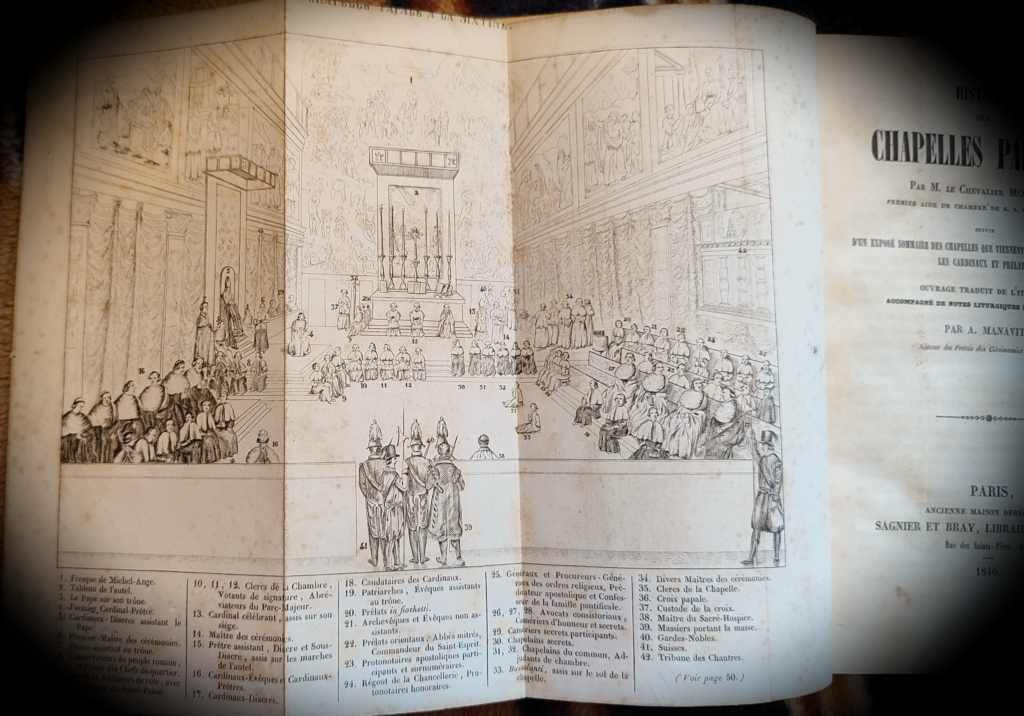
RECOMMENDED VIDEOS
RECOMMENDED READING
- Charles Michael Baggs, The Papal Chapel Described and Illustrated from History and Antiquities, Rome 1839.
- Sherr, R. (2015). The papal chapel in the late fifteenth century. In A. Busse Berger & J. Rodin (Eds.), The Cambridge History of Fifteenth-Century Music (The Cambridge History of Music, pp. 446-462). Cambridge: Cambridge University Press. doi:10.1017/CHO9781139057813.032.
FOOTNOTES
[1] The Office of Papal Liturgical Celebrations still regularly issues the so-called libretti della celebrazione, i.e. booklets with liturgical texts (Ordo Missae, chants, prayers, etc.), in which the term Cappella Papale is used. For example: Christmas Eve Midnight Mass in 2022. For about two decades, these booklets began to be printed in larger quantities, i.e. ultimately for all participants of the celebration, and later also placed on the website of the Holy See. The Archive of the Office of Papal Liturgical Celebrations allows us to consult booklets since 2009. In the past, they were printed in smaller quantities and distributed among members of the diplomatic corps; they were prepared in French, the language of diplomacy. Booklets from before the Great Jubilee of the Year of Our Lord 2000, especially those printed during the pontificates of the Polish Pope’s predecessors, are difficult to obtain, although they sometimes appear in the offers of foreign antiquarian bookshops (the oldest copies we managed to find date back to the pontificate of Pius XII).
[2] Here we pay attention primarily to the liturgical dimension of the papal ceremonial and Roman traditions. The diplomatic or state dimension is of secondary importance to us here. Moreover, the term itself was and is used primarily in its practical meaning, i.e. in the context of the lex orandi or praxis of the Church. Our intention is to maintain the popularizing character of this text.
[3] The literature on this subject is rich. Let us just highlight an exemplary historical study that allows us to become familiar with the elements of the process of creating the Papal Chapel: P.-.Y Le Pogam, De la « Cité de Dieu » au « Palais du Pape » : Les résidences pontificales dans la seconde moitié du XIIIe siècle (1254- 1304), Publications de l’École française de Rome, Rome 2005. When it comes directly to the papal liturgy, the works by M. Dykmans are invaluable: Le cérémonial papal de la fin du Moyen-Âge à la Renaissance, vol. I-IV : Le cérémonial papal du XIIIe siècle (1977), De Rome en Avignon ou le cérémonial de Jacques Stefaneschi (1981), Les textes avignonnais jusqu’à la fin du grand schisme d’Occident (1983), Le Retour à Rome ou le cérémonial du patriarche Pierre Ameil (1985), Institut Historique Belge de Rome, Bruxelles-Rome.
[4] „Quando i Papi andarono ad Avignone, non dimenticarono di essere Vescovi di Roma. Questo significava sul piano liturgico e sul piano cerimoniale una cosa fondamentale: riprendere tutta la tradizione liturgica romana all’interno di u ambiente nuovo, dove non c’erano più i luoghi della tradizione: le celebrazioni romane che il Papa compiva nelle chiese dell’Urbe passarono nelle cappelle di palazzo e divenero così le cappelle papali. (…). I Papi cominciarono a celebrare in modo continuativo e con un clero stabile, e non quello occasionale delle stationes. Era questa la cosidetta 'Cappella Papale'”, A. Gagliarducci, S. Sanchirico, Linguaggi pontifici. Storia, significati, protocollo della piùantica instituzione del mondo, Savona 2022, p. 25.
[5] M. Dykmans, L’oeuvre de Patrizi Piccolomini ou le cérémonial papal de la première Renaissance, 2 vol, „Studi e testi” 293-294, Biblioteca Apostolica Vaticana, Città del Vaticano 1980-1982.
[6] J. Nabuco, J. La liturgie papale et les origines du Cérémonial des Évêques, w: Miscellanea liturgica in honorem L. Cuniberti Mohlberg, t. I, Roma 1948, p. 283-300; B.K. Krzych, Od ceremoniału papieskiego do ceremoniału biskupiego. Wpływ renesansowej Cappella Papale na liturgiczny rytm życia stolic biskupich, „Ruch Biblijny i Liturgiczny”, 73(4), p. 293-308.
[7] By analogy, the terms „Cardinal’s Chapel”, „Bishop’s Chapel” or „Prelate’s Chapel” were also used, as indicated by the title of the work by Gaetano Moroni quoted below. The Cardinals’ Chapels functioned in Rome and designated liturgies celebrated by cardinals with the participation of the Sacred College of Cardinals or its majority outside the chapels of the Papal Palaces.
[8] Since the reforms of Paul VI, these relationships have become blurred. This concerns both the liturgical reform and the reform of the Papal Court (motu proprio Pontificalis Domus of 1968), as well as more detailed regulations, e.g. motu proprio Peculiares Ius of 1966 regarding the use of altars belonging to the Pope by other clergy.
[9] Nowadays – in the context of the functioning of the Papal Household – the term Cappella Pontificia is used, as opposed to Cappella Papale, which is used to describe papal liturgies, at least in official documents (see footnote no. 1, but also, e.g., the Apostolic Constitution Praedicate Evangelium of 2022, especially Article 228 § 1).
[10] Detailed lists would be beyond the scope of this text. You can read them in studies (e.g. in the online Enciclopedia Italiana, founded by Giovanni Treccani and Giovanni Gentile, on the Italian Wikipedia; or in the works cited in this study), and above all in the Annuario Pontificio, the statistical yearbook of the Holy See published for over 100 years. Appropriate calculations are also included in the motu proprio Pontificalis Domus of Paul VI mentioned above in footnote no. 8.
[11] On the Internet we can easily find publications about the Papal Court, mainly entries in encyclopedias, which can also point you to the appropriate bibliography; you can also find old illustrated descriptions of the Papal Court, e.g. G. Capparoni, Raccolta Della Gerarchia Eccclesiastica, Roma 1827.
[12] For those interested in the topic, we recommend two publications developing the topic of the Papal Chapel as an institution. Firstly, a popular publication which is a record of conversations between an Italian journalist and a former papal master of ceremonies and an expert on Vatican ceremonies and protocol: A. Gagliarducci, S. Sanchirico, Linguaggi pontifici, op. cit. Secondly, a lecture delivered by Dr. Caterina Cappucci in the Gregorianum on March 10, 2023, entitled: La Cappella papale: origine e sviluppo di un’istituzione della Curia romana (sec. XII-XIII).
[13] „Kaplica papiezka, Capella Pontificia, Capella papale, tak się nazywa nabożeństwo uroczyste, odprawiane przez Papieża, albo przynajmniej, gdy on obecny uroczyście temuż nabożeństwu, w assystencji kardynałów i prałatów dworu swojego”, in: Encyklopedja Kościelna podług teologicznej encyklopedji Wetzera i Weltego z licznemi jej dopełnieniami, vol. IX, ed. M. Nowodworski, Warszawa 1876, p. 543. The entire entry takes up 37 pages (ends on p. 580) and is essentially a summary of the work by H. Fisquet, Actes et histoire du Concile oecuménique de Rome etc., vol. III: Histoire liturgique et descriptive des chapelles papales tenues pendant l’année dans les diverses eglises de Rome, Paris 1871. This is a short lecture on papal ceremonies for the entire church year. As the author of the entry rightly notes, „these beautiful rituals” were stopped due to the occupation of Rome by the Italian army in 1870. As it turns out later, this was in practice the end of the old traditions, because after signing the „Lateran Treaties” in 1929, the Popes did not return to the former regularity of the Papal Chapels. The history of the celebration of the Papal Chapels requires a separate and detailed presentation.
[14] Moroni’s book was translated into French and was expanded by the translator with numerous additions and additions: G. Moroni, Histoire des chapelles papales, transl. A. Manavit, Paris 1846. The definition of the Papal Chapel from this edition was given in Polish for the first time in the work: B.K. Krzych, Historia, źródła i ceremonie solennej Mszy papieskiej według usus antiquior, „Christianitas” 52 (2013), pp. 179-180: „Nazywamy kaplicami papieskimi Nieszpory, modlitwy poranne, Msze śpiewane i inne kościelne ceremonie, w jakich udział bierze Najwyższy Pasterz lub jakie on sam sprawuje według czcigodnych rytów Kościoła rzymskiego w obecności kardynałów, patriarchów, arcybiskupów i prałatów jak i wielkiej liczby generałów zakonów religijnych oraz pierwszych dygnitarzy Dworu Papieskiego i Rodziny papieskiej” (p. 180).
[15] G. Moroni, Le cappelle pontificie, op. cit., p. 1; idem, Dizionario, op. cit., t. VIII, pp. 114-115: „Cappelle Pontificie, o papali. Cosi chiamansi i vesperi, i matutini, le messe cantate, i pontificali, e le altre sagre funzioni, che coi venerabili riti della romana Chiesa, e collo splendore e decoro di ecclesiastica magnificenza, celebra, o alle quali assiste il sommo Pontefice, in uno coi Cardinali, patriarchi, arcivescovi, vescovi, e prelati, colla maggior parte de’capi degli Ordini religiosi, e primarii personaggi del magistrato di Roma, e curia romana, famiglia Pontificia, ed altri, che vi hanno onorevole luogo; cioè nelle sontuose Cappelle maggiori dei palazzi apostolici, ove risiede il medesimo Pontefice, od in alcune determinate basiliche, e chiese di Roma, per festivita, e tempi ordinarii, e solenni, e per circostanze anco straordinarie; funzioni che, intimate dai Pontificii cursori, sono dirette, e regolare dai maestri delle cerimonie, dai ministri assistenti alle stesse Cappelle, e dai cappellani cantori Pontificii, colla sopraintendenza del prelato maggiordomo, prefetto de’ sagri palazzi apostolici”.
[16] L. Gromier, Commentaire du Caeremoniale episcoporum, Paris 1959. This work allows readers to enjoy authentic romanitas.
[17] Gromier does not provide the exact source. The same definition can be found, for example, in: Almanach de l’Action sociale catholique, Action Catholique, Quebec 1942 (year 26), p. 53. It was a publication modeled on the Annuaire Pontificial Catholique.
[18] Ibid., p. 11: „Le Cæremoniale S.R.E., d’où sort en partie le C.E., conduit à parler souvent de la chapelle papale, pour laquelle il fut fait. Un « Annuaire pontifical », qui pendant quarante et un ans fit les délices du clergé, la définissait comme suit : « La chapelle papale comprend toutes les personnes et tous les collèges qui ont leur rang marqué dans la chapelle papale et doivent, en cette qualité, faire cortège au souverain pontife dans ses fonctions publiques, consistoires, chapelles, processions. » Je tâche d’en donner une définition plus satisfaisante, en attendant qu’on fasse mieux. Ainsi : La chapelle papale est l’assemblée du sacré-collège, de l’épiscopat, de la prélature, de la famille pontificale, d’officiers et de dignitaires, ecclésiastiques, religieux et laïques, pour les fonctions liturgiques solennelles avec célébration ou assistance du pape, même célébrées en son absence occasionnelle, même célébrées sede vacante. Elle a lieu également pour le consistoire public, quoique fonction non liturgique ; elle avait lieu pour la cavalcade à la prise de possession de la basilique Saint-Jean de Latran par le nouveau pape. On voit que chapelle papale désigne d’abord un lieu, ensuite ce qui s’y fait, enfin ceux qui y participent”.
[19] „Per Cappelle papali s’intendono le Messe e i Vespri o quelle altre solenni funzioni che celebra o alle quali assiste o di solito assisterebbe, anche se casualmente talvolta non intervenga, il Sommo Pontefice, nella cappella dei Palazzi Apostolici o nelle basiliche e chiese, con la partecipazione del Sacro Collegio dei Cardinali, dell’Episcopato, della Prelatura e di quanti hanno luogo nella Cappella stessa, e quelle che si celebrano dal Sacro Collegio in tempo di Sede vacante” (Norme ceremoniali, op. cit., p. 19-20).
[20] We will want to discuss these issues in subsequent entries. If our P.T. Readers would like to read texts on a specific topic, they can let us know (contact information can be found in the „About” section). PAX+





